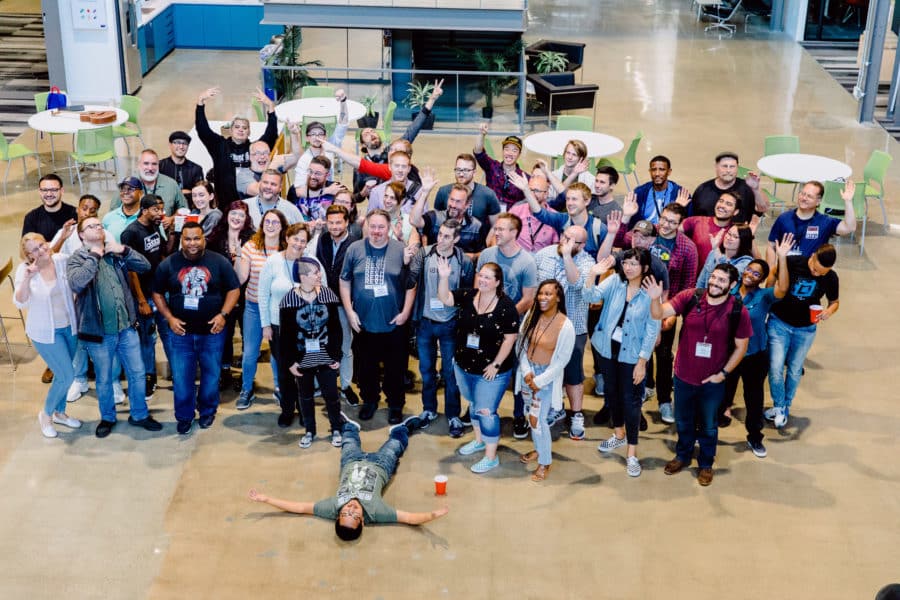What If I told you every phone call you received would be a complete mystery?
Or, what if every email in your inbox could change the course of your entire workday?
For most people, it’s certainly possible that a single phone call or email could change your day, in good ways and bad—but every one?
Oh, and one more thing: In every phone call or email, someone has a problem—typically a time-sensitive one—to solve.
And they want you to solve it.
This isn’t a game show or social media challenge. There’s no enormous prize or 15 minutes of fame waiting for you if you solve this endless maze of technical challenges—just a paycheck and the expectation that you’ll show up the next day and do it all over again.
Welcome to the world of technical support at a construction technology company, where every inbound communication is urgent, complex problems are waiting to be solved, and nearly every person on the other end of the line isn’t happy to be talking with you.
“Tech support is where the magic happens,” said Trent Hirschy, Bluebeam’s enterprise support manager. “No one ever calls up and says, ‘Hey, everything is great! Bye.”
“There’s always someone on the other end with a hurdle and a deadline,” Hirschy added, “and so we want to make sure to help them across that hurdle as quickly and efficiently as possible.”
Tech support to the rescue
If the star of most technology companies is the engineering team, followed closely by the executive and marketing teams, then the unsung hero is often the technical support team. Tech support, after all, is only called upon when something goes wrong.
Many larger companies can’t possibly staff enough human tech support team members to handle the volume of calls they receive—so they use chatbots or other artificial-intelligence tools instead, often leaving customers frustrated that they can’t explain their complex issue to a real-life human.
Then there are other companies that treat tech support as an afterthought, staffing the team with rushed, unfriendly workers who are seeking to close tickets as quickly as possible, even if it means being terse with customers—or worse, turning them away altogether.
Not at Bluebeam, maker of document management and digital collaboration software.
Not only is the entire tech support team at Bluebeam made up of humans, but they are some of the most highly regarded people in the company. They’re also some of the most inspired individuals you’ll ever meet. In addition to being exceedingly gifted at solving complicated technology issues, the team is also filled with musicians, improv comedians and other wide-ranging creatives.
This combination of technical savvy and non-technical, creative interests enables the tech support team at Bluebeam to offer customers a deft touch when it comes to communication and problem-solving.
“Our mission in tech support at Bluebeam is to get our customers back to work as quickly as possible,” said Bluebeam Documentation Manager Travis Nilan, a musician who studied theater in college, can build a computer from scratch and, along with Hirschy, can be seen flexing his improv comedy skills as the company’s on-stage master of ceremonies for its annual XCON user conference.
Bringing personality to the job
Getting customers back to work as quickly as possible doesn’t mean offering half-measures. Tech support at Bluebeam is built on a dual foundation: spend as much time as necessary with customers to help them solve specific issues related to Revu or other Bluebeam solutions, and be proactive by getting out in front of potential problems by publishing detailed articles and other online resources so customers can address problems on their own.
Then there are the unique human character traits that come with interacting with a member of Bluebeam’s tech support team: humility, empathy and, perhaps most important, authenticity.
“One of our things is it’s OK to not know the answer,” said Jared Lichtenthaler, a Bluebeam enterprise support specialist, who came to work in tech support after several years as a Revu user in the mechanical engineering industry.

Trent Hirschy, left, and Travis Nilan, right, perform a musical act at a recent Bluebeam XCON user conference in Austin, Texas.
Indeed, the human aspect of connecting with customers while helping them solve their technical challenges is a major priority and differentiator for Bluebeam’s tech support team. “If a customer calls in and they’re looking for an answer, the first thing that I’m going to make sure of is that they feel like I’m engaged,” Lichtenthaler said. “I’m actively listening, writing notes and keeping track and being a proactive listener.”
“Our motto is, as long as we’re moving the issue forward, we’ll keep talking,” Hirschy added. “And if we hit a point where all that we can do in that moment has been done, we don’t want to waste the customer’s time, so we’ll collect some log files, set expectations and make sure we follow through on those expectations. If we say we’re going to call you back in an hour or a day, we make sure to do that.”
Bluebeam’s tech support team is also paying close attention to the types of issues customers raise by tracking them meticulously and analyzing closely when an initial problem may be turning into a wider trend.
“One may be a one-off, two may be a coincidence—but three is a trend,” Hirschy said. “At some point, we need to get other folks involved. We have a wonderful research analyst team also within tech support who we can reach out to; they know the software inside and out.”
This team, known as the Research, Advocacy and Test (RAT) team, meets daily with Bluebeam’s engineering and product teams to discuss trends and issues identified by customer interactions with tech support.
Nilan and his team, meanwhile, focus on the proactive aspect of Bluebeam’s tech support mission. In overseeing the tech support website, Nilan and his team of technical writers publish hundreds of support articles, both in the U.S. and internationally, so customers can help themselves as much as possible.

“We’re very much trying to be a proactive resource,” Nilan said. “Tech support is traditionally a reactive team—you’re waiting for people to call in—but there are things you can do to be as proactive as possible, and the self-help aspect is one of those things.”
To determine those would-be problems, Nilan and team are listening to frontline colleagues, monitoring cases as they come in. As trends surface, that’s a cue for an article to write and publish on the tech support website. His team also observes Bluebeam’s beta testing program, which gives some customers early access to new software features and releases, while also maintaining communication with the company’s product marketing and engineering teams to identify pain points or potential customer confusion.
Creating fulfilling careers
Why work in tech support?
Perhaps most people don’t grow up yearning to help people solve technology problems. But members of Bluebeam’s tech support team say that, even though they didn’t dream up a career in the field, they find that the job is extremely fulfilling.
For Nilan, being able to interact with and help people every day is something he loves about the gig. “I just fell in love with the day-to-day culture of coming to work and working with good people and helping good people,” he said.
And even though he is no longer pursuing music or acting full time, Nilan said his job allows him to employ many of those creative skills. “I’ve done a lot of improv comedy, so being fast on your feet is helpful,” Nilan said.
Lichtenthaler said that, as a former Revu user, joining the Bluebeam tech support team has offered him a new perspective into his professional interests. “Having industry experience and coming into a tech support role for construction software like Revu has been so incredible,” said Lichtenthaler, who, unlike many of his colleagues, doesn’t play a musical instrument. (He does, however, proclaim to be “a champion at karaoke.”)
Then there’s Hirschy, another musician who plays bass guitar in a band in Chicago. He said working in tech support in the construction industry gives him the satisfaction that he and his colleagues are often playing a pivotal role in building some of the most massive and impactful construction projects in the world. “Sometimes you pick up a call or open an email, and maybe the person on the other end is working on a multibillion-dollar project,” he said. “That gets us excited, to see these amazing things being built and know that we’re playing a part in that and keeping them moving along if they do come up with a question or hurdle.”










